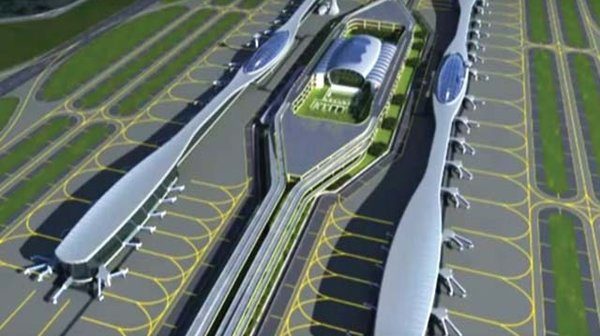The upcoming Navi Mumbai International Airport (NMIA) promises to alleviate congestion at the overburdened Chhatrapati Shivaji Maharaj International Airport (CSMIA) in Mumbai. However, a cloud of uncertainty hangs over the project as major airlines like IndiGo and Air India express reluctance to relocate their operations. This article delves into the reasons behind their hesitation, exploring how Navi Mumbai Airport, despite its potential, might create logistical and operational challenges for airlines, passengers, and the entire cargo ecosystem.
CSMIA: A Victim of its Own Success
Mumbai’s CSMIA, currently India’s second-busiest airport, struggles to manage the ever-increasing passenger and cargo traffic. Delays, congestion, and maxed-out infrastructure paint a picture of an airport straining at the seams. Navi Mumbai Airport, a greenfield project boasting a swanky design and a capacity to handle millions of passengers, is touted as the much-needed solution.
Why the Hesitation? Airlines Speak Up
Despite the apparent benefits, major airlines are hesitant to commit to a complete shift to Navi Mumbai Airport. Here’s a breakdown of their concerns:
-
Connectivity Blues: Currently, Navi Mumbai lacks a robust multi-modal transportation network. While road connectivity is planned, the absence of a direct rail link or a functional metro line raises concerns. Passengers accustomed to the convenience of the CSMIA’s location, well-connected to the city center by various modes of transport, might face significant travel hassles to reach the new airport. This could discourage both business and leisure travelers, impacting airline profitability.
-
Operational Challenges: Shifting a large-scale operation like an airline hub involves significant logistical complexities. Airlines worry about the additional costs and challenges associated with setting up new infrastructure and staff relocation at Navi Mumbai. Concerns regarding cargo handling facilities and smooth integration into existing supply chains also add to the apprehension.
-
Passenger Inertia: Passengers develop a comfort level with existing airport facilities, including access to lounges, duty-free shops, and reliable ground transportation options. The lack of established amenities and services at a new airport can deter passengers, impacting airline ticket sales. Airlines might be hesitant to invest heavily in routes serviced from Navi Mumbai until passenger demand picks up.
-
The “Network Effect” Conundrum: Airlines often rely on a network effect, where connecting flights become more attractive due to the sheer number of destinations offered from a single hub. CSMIA, with its established network of domestic and international connections, provides this advantage. Shifting to a new airport could disrupt these established networks, requiring airlines to rebuild them at Navi Mumbai, a time-consuming and resource-intensive process.
Beyond Airlines: Passengers and Cargo Feel the Ripple Effects
The airline industry’s concerns have a ripple effect on passengers and cargo operations:
-
Passenger Woes: Travel time to and from the airport is a crucial factor for passengers. Without a robust transportation network connecting Navi Mumbai to the city center, passengers, especially those with tight schedules or heavy luggage, could face significant inconvenience.
-
Cargo Concerns: Mumbai serves as a crucial air cargo hub. Delays and disruptions in cargo movement due to logistical challenges at Navi Mumbai could impact businesses and supply chains. Establishing efficient cargo handling facilities and seamless integration with existing infrastructure are crucial for smooth cargo movement.
A Silver Lining: Overcoming the Hurdles
While the airlines’ concerns are valid, the potential of Navi Mumbai Airport cannot be ignored. Here’s what can be done to bridge the gap:
-
Infrastructure Push: Prioritizing the development of a multi-modal transportation network, including a direct rail link and a functional metro line, is critical. This will ensure easy accessibility for passengers and cargo.
-
Government Incentives: The government can offer attractive incentives, such as tax breaks or operational cost subsidies, to encourage airlines to move to Navi Mumbai. This can help offset the initial costs associated with relocation.
-
Phased Approach: A phased transition, where airlines gradually shift operations to Navi Mumbai, can ease the logistical burden and minimize disruptions. This allows passengers and airlines to adapt to the new airport environment.
Conclusion: A Collaborative Approach for Takeoff
The success of Navi Mumbai Airport hinges on a collaborative approach. Addressing airline concerns about connectivity, operational costs, and passenger convenience is crucial. Simultaneously, developing a robust transportation network and efficient cargo handling facilities will ensure a smooth transition for all stakeholders. By working together, airlines, the government, and infrastructure developers can turn Navi Mumbai Airport from a source of apprehension into a symbol of India’s growing aviation prowess. Only then can Navi Mumbai truly take off and fulfill its potential as a world-class aviation hub.





